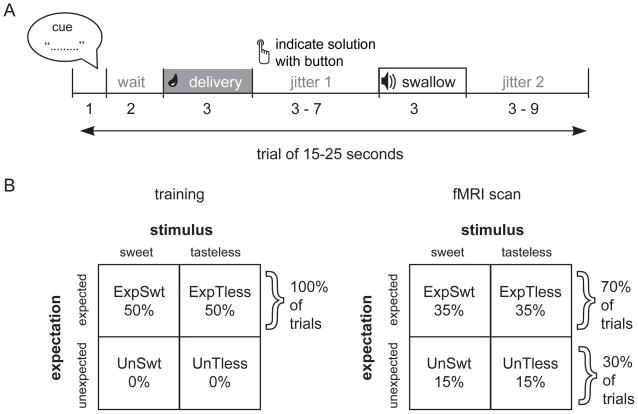Figure 1. Experimental design.
A. Timeline of events within a trial. Events lasted 15 – 25 seconds with an average length of 20 seconds. Each event began with a 1-second vocal cue announcing either “sweet” or “tasteless”, a 2 second wait period, after which sucrose or tasteless solution was presented (0.5 ml over 3 seconds). Subjects were asked to indicate which solution they received by pressing a button on a button box as fast as they could during jitter 1 (various lengths that were randomized over trials). Then a 1-second swallow tone indicated that the subjects were allowed to swallow the liquid. After jitter 2 (various lengths that were randomized over trials) a new trial began.
B. Graphical depiction of design. During training (left) all trials were valid (ExpSwt = validly cued sweet delivery and ExpTless − validly cued tasteless delivery). During the fMRI scanning only 70% of the events were valid. The remaining 30% were invalid trials in which subjects heard “tasteless” but received sweet (UnSwt) or heard “sweet” and received tasteless (UnTless).

